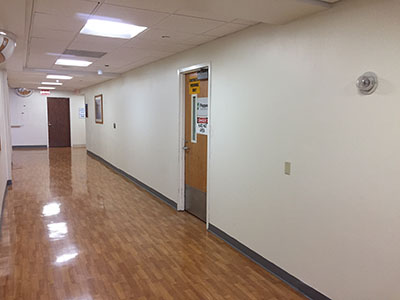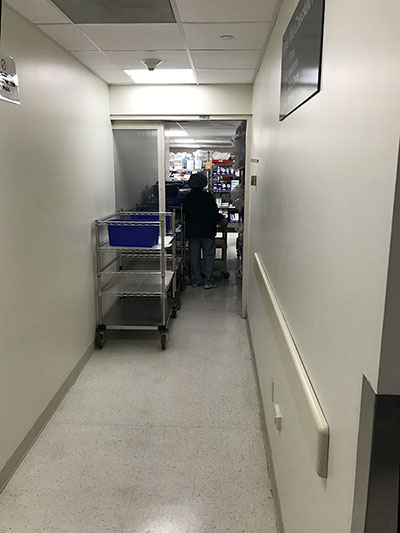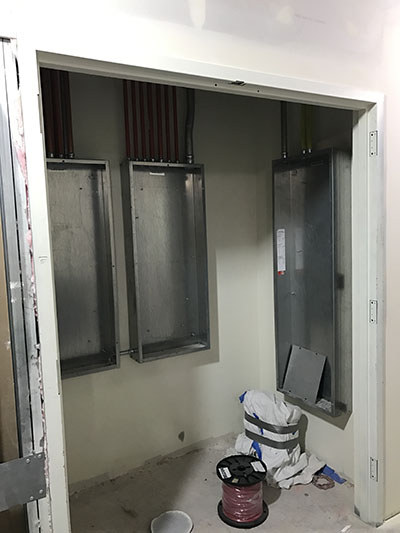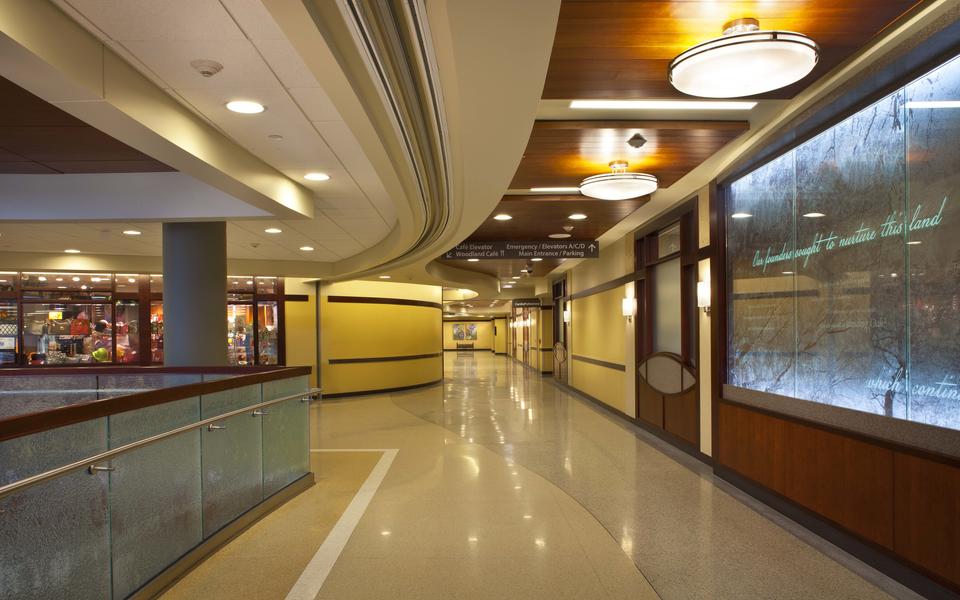Healthcare, Safety, Quality
Why safety and quality matter most in healthcare renovations
The goal of hospital renovations is to improve efficiency and patient satisfaction. And yet, these are the very outcomes that can be sacrificed when in the middle of a renovation project. According to Healthcare Facilities Management’s 2016 Hospital Construction Survey, of those respondents who had projects in planning or under construction, three-fourths of the projects were expansions or renovations. As hospitals move toward updating their existing facilities, it’s important to understand what to expect.
Hospital renovations are anything but straightforward. Each project deals with a myriad of complexities, unknowns and issues. Because of this, there is no silver bullet or one-size-fits-all answer. Owners need to work with design and construction teams that have both the passion and the ability to solve the countless challenges that hospital construction entails.
These challenges can come in many forms:
- Aside from the technical knowledge of construction, how does one create space where there seemingly is none?
- How can a new department be built while totally hidden from the public view?
- How do you seamlessly transition from older space to newer space completely unnoticed?
- Is it possible to introduce many new workers to the hospital mix and yet not affect current services such as parking or cafeteria space?
- How up-to-date are your as-built data and documents? Does the facility utilize a COBie-based (Construction Operations Building Information Exchange) system? How likely are you to uncover unknown existing conditions?
- How will your planned changes affect other areas of the hospital?
- For multi-phased renovations, what is the right sequencing to accommodate fluctuations in census, and what are the implications on cost?
- How will your team plan and deliver your program per the Certificate of Need (CON) requirements (state-specific, like Illinois)?
These concerns, along with infection control, interim life safety measures and many others, are but a few of the challenges that hospital owners face while performing construction on campus.
When we ask our hospital owners what matters most on a project, often the first answer we receive is budget and schedule. While each is important and has its own set of challenges, if you look at the list above, what really matters is safety and quality. Hiring your partners first on budget or schedule could mean risks are exposed, but a contractor concerned about safety and quality first will also protect the schedule and budget…because their mindset is already one of protection.
In what ways does how we work impact the cost?
A multi-faceted approach to planning
In hospital construction, the budget is often driven by choices in how the work is executed. A project with multiple phases will generally cost more than a non-phased project. How the trades access the space and how debris is disposed of will affect safety and cost.
Engaging the design and construction professionals early in the process can lead to a better plan, a better budget and better results.
Because the hospital’s needs can change on a daily basis, an important role of your construction partner is to develop multiple scenarios and revise the plan as needed. Continuous planning for a hospital renovation project is important to its success in all aspects - safety, quality, budget and schedule.
A good plan separates patients and hospital staff from construction crews. Examples of critical, early project planning include items such as:
01. Interim Life Safety Measures.
These are coordinated with the facility, include appropriate emergency exit plans and address general hospital patient and staff routing designed to keep them safe and maintain efficiency.
02. Exterior roadway and parking alterations and main entrance shutdowns.
These plans should be coordinated with both the facility and outside vendors (such as ambulance service providers). Helipad and flight path interferences require additional attention and time to coordinate.
03. Critical interior and exterior logistics drawn in plan form.
Logistics should be reviewed by the facilities' staff and upper management. These plans can also be helpful for incoming patients who become confused by exterior phasing. The plans can be provided to hospital staff for handouts and flyers that are distributed to hospital patients. All logistics and phasing plans should be supported by drawings/sketches for distribution and review purposes.
04. Physical review.
Painting sensitive exterior logistics on the ground allows facility staff to review one more time before physical barriers are placed.
05. Project materials and equipment staging plan.
This should be developed in acceptable locations in coordination with the facilities' needs. At many hospitals, space is at a premium and construction may need to consider "just-in time" deliveries.
How does this kind of planning play out?
While working on a recent project, we had a situation where the only exit out of a space required us to share an exit stairwell and a common corridor within an active LDRP (Labor Delivery Recovery and Postpartum) area. Opening the space to these patients and the construction workers at the same time simply was not an option.
Instead, we came up with the plan of removing an exterior window and creating an exit ramp for debris removal and material deliveries. In the end, both the hospital and the construction teams benefited from the additional access point.
The process to implement the new ramp was depicted in at least three different logistics plans. Each plan was presented to the client for distribution to their internal staff. Considerations included the way the fencing was laid out, impact on staff traffic into the building, the location of dumpsters, the length of time the ramp was in place and even the effect on landscaping.
Often times, we need to create opportunities where seemingly none exist. These kinds of solutions will only happen when considering all aspects of the project, and not just the budget and schedule.
Value in coordinating the plan before coordinating the systems
Another key to successful renovations is how the mechanical, electrical and plumbing systems are addressed. The architectural phasing of a space is not always coordinated to work with the reality of how the mechanical systems are planned and designed, and the contractor helps bridge the differences between the two.
Project development and execution must consider the need to maintain existing systems to ensure code-compliance, patient care and staff needs. MEP systems are much more complex than simply turning off the heat or A/C in one area of the hospital to complete construction work in another. Typically, the systems designed to service the new space traverse through or connect to existing, active spaces. Bridging the mechanical and electrical systems through active spaces requires additional planning and often times after-hours work.
On a current project, we provided important phasing information and associated cost analyses, with the goal of improving the turnover date of the space. The original plan called for an existing electrical closet within the space to be moved during one of the early phases. However, the infrastructure required to move the closet would not be available until after the phase's scheduled completion many months later.
The infrastructure could have been expedited, but it would have come at a hefty price tag of $100,000 or more in construction costs, plus indirect costs to the hospital associated with the inconvenience and inefficiency of making those changes early-on.
Instead, the design and construction team worked together on a plan to leave the closet in place until the new one was ready. When complete, the existing closet was removed at a much smaller cost of some finish patches at the floor and ceiling. By providing a small amount of temporary power, we simply phased out the circuits one at a time in the original closet and transferred them to the new closet. All of the work was completed behind the scenes with no interruption to the hospital services.
Construction partners should consider the needs of the hospital when deciding on this type of phasing solution. A contractor hired based on price or schedule would likely have proceeded with the original plan at a substantial cost to the client instead of choosing to look out for the hospital’s interests.
Seeing the project as a health care facility and not a single scope of work
I’ve shared a few examples from my own experience working inside hospitals, but it’s important to note that these kinds of successful solutions are only possible when the entire team - owner, architect, contractor and subcontractors - work together to keep patients first.
We rely on the hospital staff (and they on us) throughout the course of a job, and we can only be effective if we first understand the hospital’s needs. At Pepper, we start our projects off a little differently to create this kind of dedication. On my current project, we have provided hospital specific information during our on-boarding of new tradesmen. Once a week we hold an all-site tool box talk where we discuss hospital specific construction issues to be mindful of, so that the needs of the patients and staff are continually reinforced.
This type of commitment fosters a vested interest not just in our projects but also in our clients’ success. In fact, it is not uncommon for our field teams to celebrate the completion of new space by sharing flowers and food with the hospital team – or even after a particularly noisy step or invasive shutdown.
A vulnerable patient population and construction work do not go together. However, the reality is proper care demands better, more modern healthcare facilities, where equipment has to be updated and space re-allocated to fit the hospital’s changing needs. A construction partner who cares will take the time to anticipate the unique challenges of your facility and plan ahead so you can continue to care for your patients and their families.







